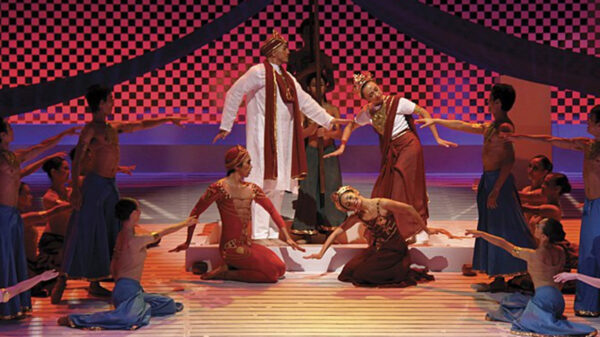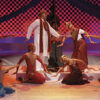Seven exemplary individuals were conferred the National Artist Awards by President Rodrigo Duterte in Malacañang.
Visual artist Lauro “Larry” Alcala, theater advocate Amelia Lapeña Bonifacio, music master Raymund “Ryan” Cayabyab, filmmaker Kidlat Tahimik, architect Francisco Mañosa, literary writers Resil Mojares and Ramon L. Muzones were declared National Artists, joining the league of Filipino artists who have received the highest recognition bestowed by the nation.

Throughout his 56 years of cartooning, Alcala utilized his comic strips to spice up the Filipino lives with witty illustrations, featuring over 500 characters in about 20 comic strips serialized in various publications. His iconic work Slice of Life, which had been circulated for decades, helped his avid readers and followers to find their sense of self amid the not-so-good environment and situations Filipinos experience. He also made two murals, and inspired the production of six motion pictures based on his cartoon creations.
Lapeña-Bonifacio established the Teatrong Mulat ng Pilipinas, which helped place the Philippines on the world theater map. She wrote plays based on materials culled from painstaking researches, and had been involved in the production and design of puppets. She was instrumental in the surge of children’s theater in the Philippines, through the magic of puppetry. Drawing upon the untapped wealth of Philippine and Asian folklore and experimenting with various forms and techniques of Asian theater arts and puppetry, she enriched the Philippine cultural heritage in drama. She successfully synthesized a myriad of rich puppet traditions from Southeast Asia, earning for herself the title “Grand Dame of Southeast Asian Children’s Theatre.”
Cayabyab’s diverse compositions, which exhibit both mastery of composition technique and spontaneity, has made a great impact in the Philippine music industry. His music reflects the exuberance of life and human happiness, thus capturing the very essence of our Filipino soul. It embodies the Filipino values and social experiences. His learned, skillful, and versatile musical style spans a wide range of genres: from conservatory or art compositions such as concert religious music, symphonic work, art song, opera, and concerto to mainstream popular idioms in the music industry and in live contemporary multimedia shows (musical theater, dance, and film).
Kidlat Tahimik strongly believes that the films and the filmmaker are one. He has continually invented himself through his cinema, and so his cinema is as singular as the man. Kidlat has epitomized the possibilities of alternative modes of filmmaking and the artisanal form of production. The mode of making the film exhibited Kidlat Tahimik’s intense independence as an artist and, at the same time, the film itself called for Filipinos to actively live out their independence and not allow their culture to be imperialized by the west.
From the 1960s until his retirement in 2015, Mañosa courageously and passionately created original Filipino forms, spaces with intricate and refined details. Through the years, he successfully and even playfully constructed these forms and spaces into masterpieces for both the poor and the rich. He passionately and painstakingly developed the use of indigenous materials, bamboo, coconut, rattan, capiz, and various kinds of inlay and applied all these into first class architectural finishes, furniture and furnishings. The buildings he designed included the Tahanang Pilipino (or the Coconut Palace), internationally awarded Aman Pulo Resort with its deconstructed “bahay kubos” style, and the San Miguel Building with its rice terrace–like green balconies and “tukod” inwardly slanting windows.
An educator, scholar, essayist and fictionist, and cultural/literary historian, Mojares is one of the leading figures in regional literature and history. As founding director of the Cebuano Studies Center, an important research institution which placed Cebu in the research and documentation map, he pioneered Cebuano and national identity formation. As a leading figure in cultural and literary history, he networked actively in many organizations. For over 50 years, Mojares has published in diverse literary forms (fiction, essay, journalism, scholarly articles, and books) across a wide range of discipline (literature, history, biography, cultural studies, and others). To date, he has 17 published books (3 more in the press) and edited, co-edited, or co-authored 11 books, and written numerous articles for popular and scholarly publications.
Muzones was a Hiligaynon poet, essayist, short story writer, critic, grammarian, editor, lexicographer, and novelist who authored an unprecedented 61 completed novels. Some of his works represent groundbreaking “firsts’ in Hiligaynon literature such as the feminist Ang Bag-ong Maria Clara, the roman a clef Maambong Nga Sapat (Magnificent Brute,1940), the comic Si Tamblot (1946), the politically satirical Si Tamblot Kandidato Man (Tamblot is Also a Candidate, 1949), the 125-installment longest serialized novel Dama de Noche (1982-84), etc. Hailed by his peers as the longest reigning (1938-1972) among “the three kings of the Hiligaynon novel,” Muzones brought about its most radical changes while ushering in modernism. With a literary career that spanned fifty-three years (1938-1990), his evolution covers the whole history of the Hiligaynon novel from its rise in the 1940s to its decline in the 1970s.



























































































